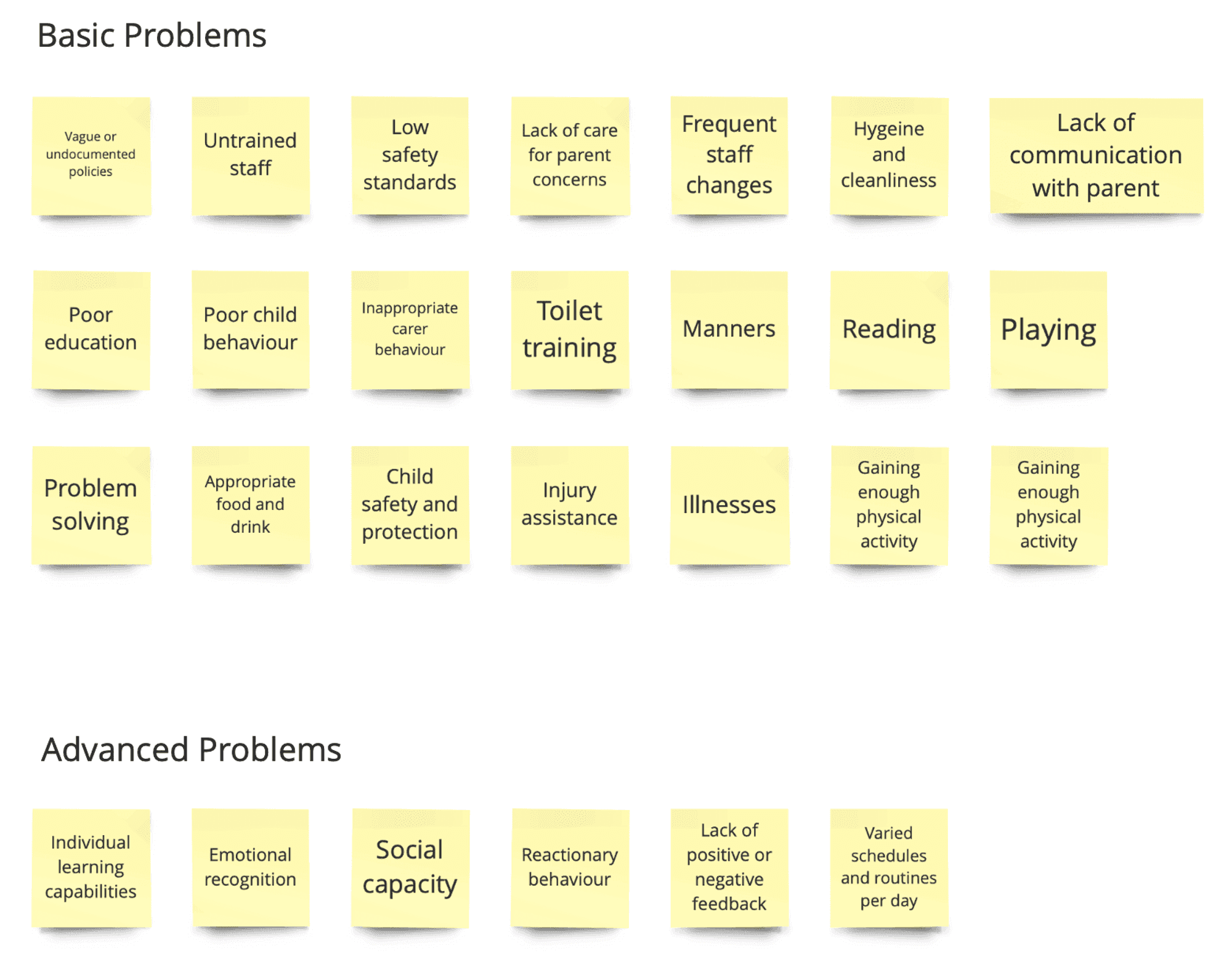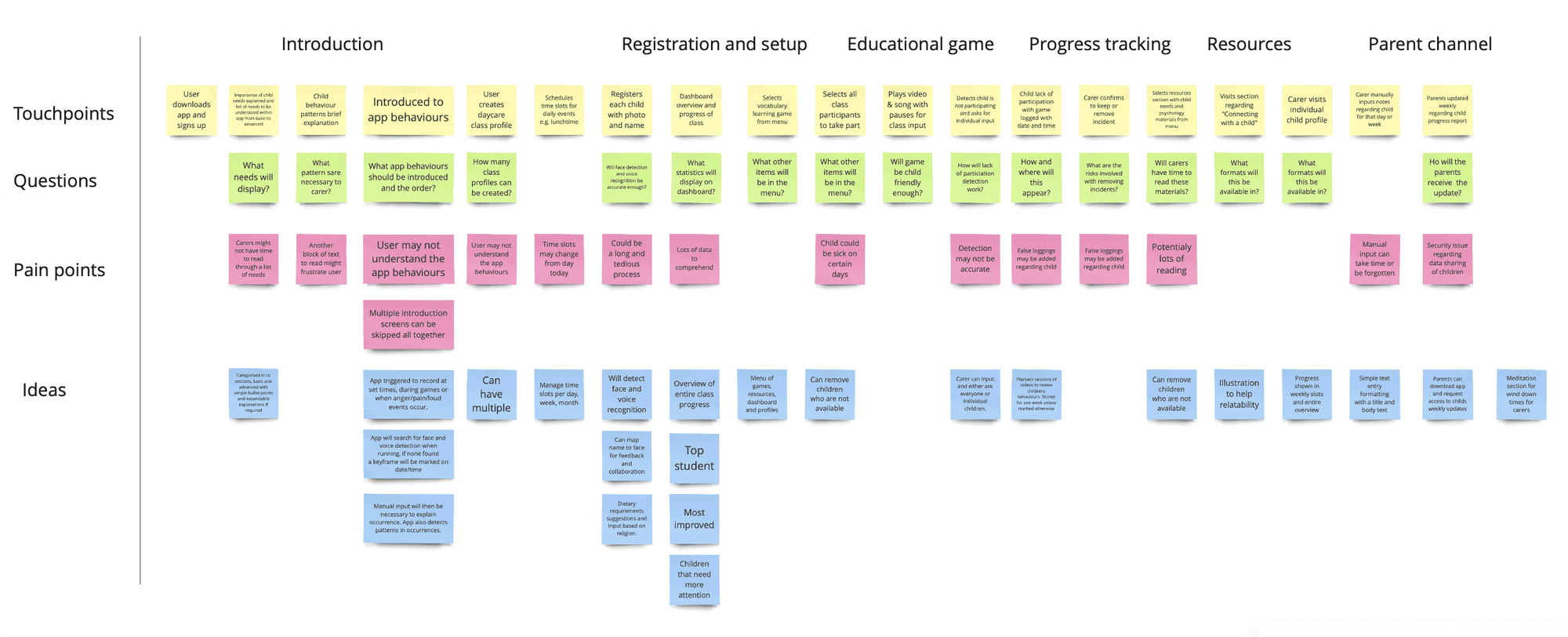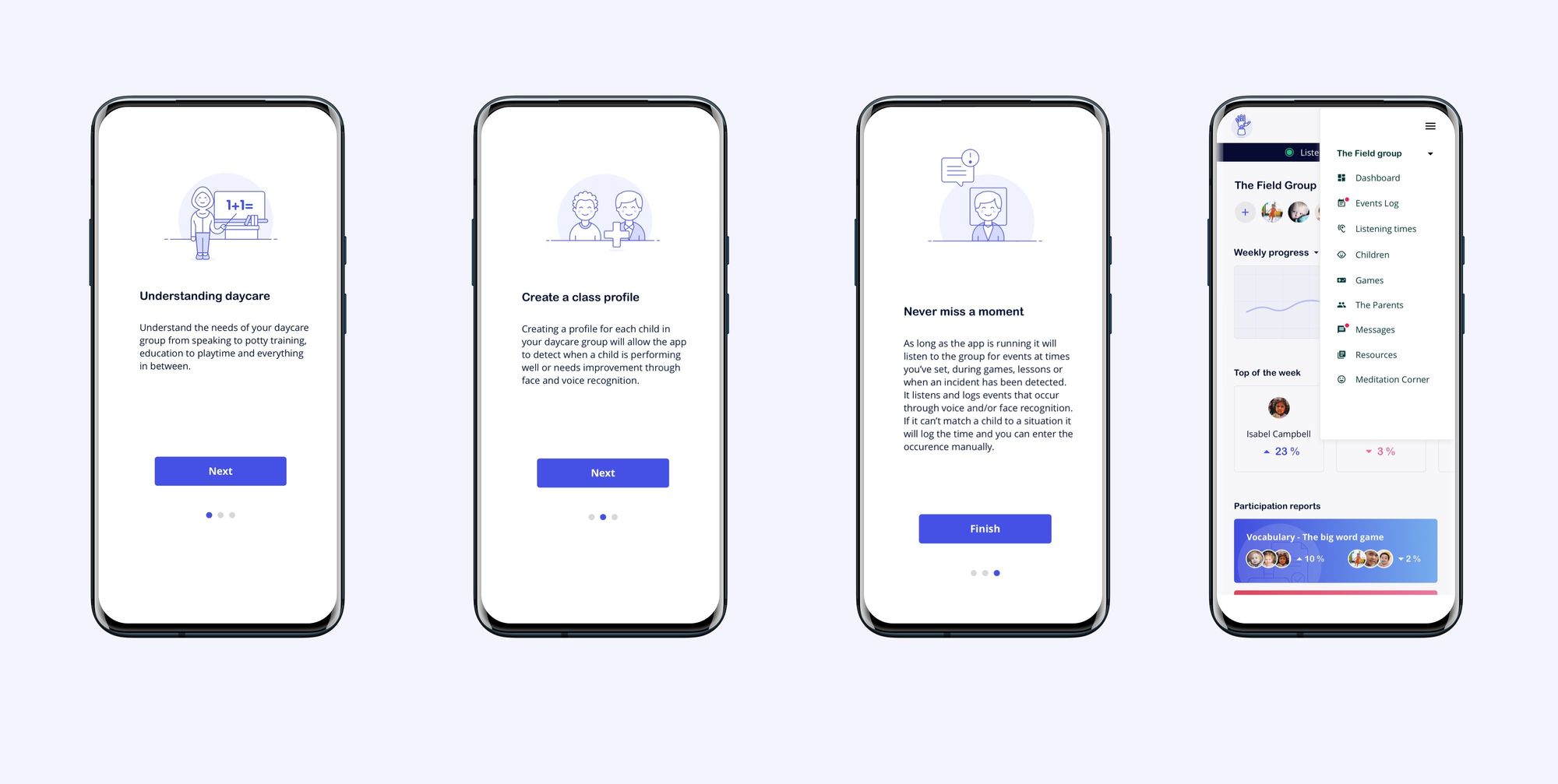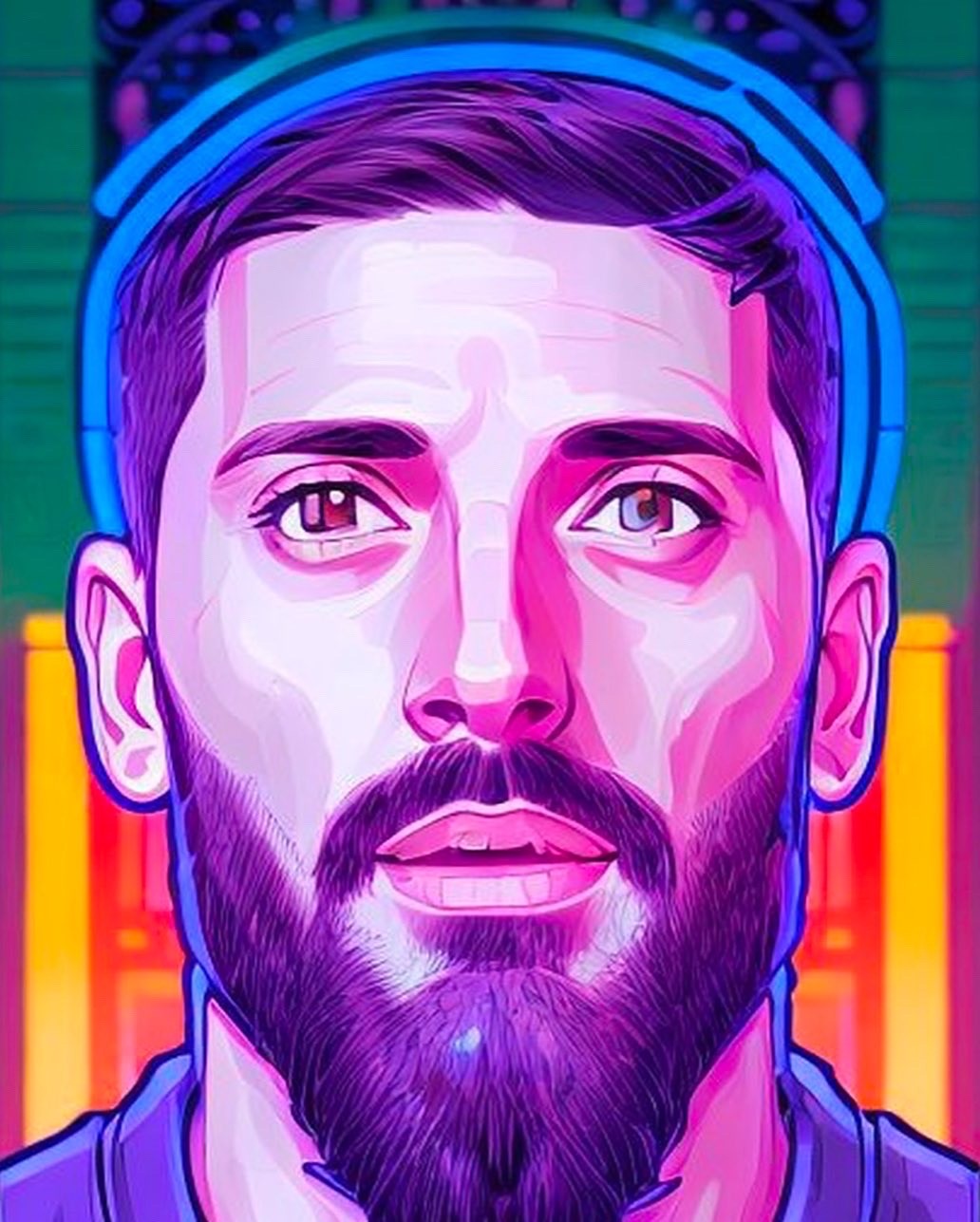Microsoft Design Challenge
The challenge
Childcare has grown due to the fact that many parents have full time jobs. Daycare workers are increasingly challenged with the demands of parents and the promise that their children’s needs and learning are looked after. Design an experience that helps daycare workers understand the needs of each individual child throughout the day. Consider AI and ML technologies to help in the overall experience you’re designing for this user.
Further understanding
Regardless of the methods I used, it was important to describe my recommendation clearly and concisely to help us understand the work and process. How did I go about thinking about this problem and solving it. What assumptions did I make?
Initial research
Having had no professional prior experience working in daycare or with children in any regard, it was important to understand the role of a daycare worker and their responsibilities. I spent a large amount of time researching the role through online forums, youtube videos and interviews with daycares to understand their mindsets and daily tasks. From this research I could identify patterns with daycare persona types and forms assumptions based on them. Two other areas that required research and attention were understanding how artificial intelligence ****and machine learning could potentially influence the user experience.
Life of a daycare worker - https://www.youtube.com/watch?v=LSlbXH0dkS8
Day in childcare - https://www.youtube.com/watch?v=_8FD8B_XAEY
Morning at daycare - https://www.youtube.com/watch?v=PZY-hB2C_Iw
Daycare observation - https://www.youtube.com/watch?v=iDg2hR1FPgA
Machine learning - https://www.youtube.com/watch?v=65ccAY6U908&feature=youtu.be
Inside Azure datacenter architecture
Patterns within large amounts of data
Infuse AI into your existing applications to enable more personalized experiences, for example facial recognition or distilling actionable information from images exposed to an app.
Pareting tips - https://howdoesshe.com/5parentingtipsfortoddlers/
Peaceful Parent, Happy Kids: How to Stop Yelling and Start Connecting (The Peaceful Parent Series)
When your child can label how he is feeling, it helps him gain control over his emotions and communicate them to others - https://www.zerotothree.org/resources/326-toddlers-and-challenging-behavior-why-they-do-it-and-how-to-respond
Day in the Life of a Daycare Provider | WHAT I DO WITH 10 KIDS UNDER 5 - https://www.youtube.com/watch?v=weOGK8EzGjg
5 daycare problems - https://www.todaysparent.com/toddler/5-daycare-problems-solved/
Is your daycare right for you? - https://www.familyeducation.com/videos/daycare-warning-signs
Daycare forum - https://www.daycare.com/forum/forumdisplay.php?s=d2d22b427d01beac253d8ab12e75a380&f=2
Patterns: Time of day (e.g. does child react a certain way the same time everyday or after an event)
Individual child
After eating
Before/after sleeping
Language (Speech and text)video
Competitor analysis
Next up was to research the market to see if anything similar had been created previously which could then confirm any assumptions I could potentially make based off the research done prior. Looking at the competitors and inspiration is a great way to understand the scope of which people have attempted similar projects and in which areas there could be improvements.
Problems and considerations
Having researched potential users of the mobile app, their routine and daily responsibilities whilst also looking at the competition for inspiration to see what assumptions have been made previously I could begin to identify problems and considerations.


User personas
Creating user personas at this stage allows me to relate to the people that will be experiencing the app. Their profiles are based off all of the research committed up to this point, three personas were identified:
Joanne Field (The carer)
Susan Stone (Child’s mother)
Jack stone (Child at daycare)

To-be scenario map
With an understanding of how daycare for children works and an understanding of problems and considerations now faced on a daily basis by professionals in this field I began to build a scenario map for how the app could potentially work. Along the way looking at touchpoints, questions, pain points and ideas.

Wireframes
With the to-be scenario map created, it was time to begin wireframing the journey of the user with minimal UI design. This was to ensure the user journey flowed correctly and worked to achieve the goals defined previously.


High fidelity designs
Designing the user experience of a product is fascinating considering all of the research that goes into understanding a persona and why they make certain decisions. Now however it was time to transfer the wireframes into high fidelity mockups that could be experienced at the intended potential by users.


Finalised concept
Understand the needs of your daycare group from speaking to potty training, education to playtime and everything in between.
Creating a profile for each child in your daycare group will allow the app to detect when a child is performing well or needs improvement through face and voice recognition.
As long as the app is running it will listen to the group for events at times you’ve set, during games, lessons or when an incident has been detected. It listens and logs events that occur through voice and/or face recognition. If it can’t match a child to a situation it will log the time and you can enter the occurence manually.
Metrics and progress of the children are also measured and viewed throughout which can be communicated with parents.


